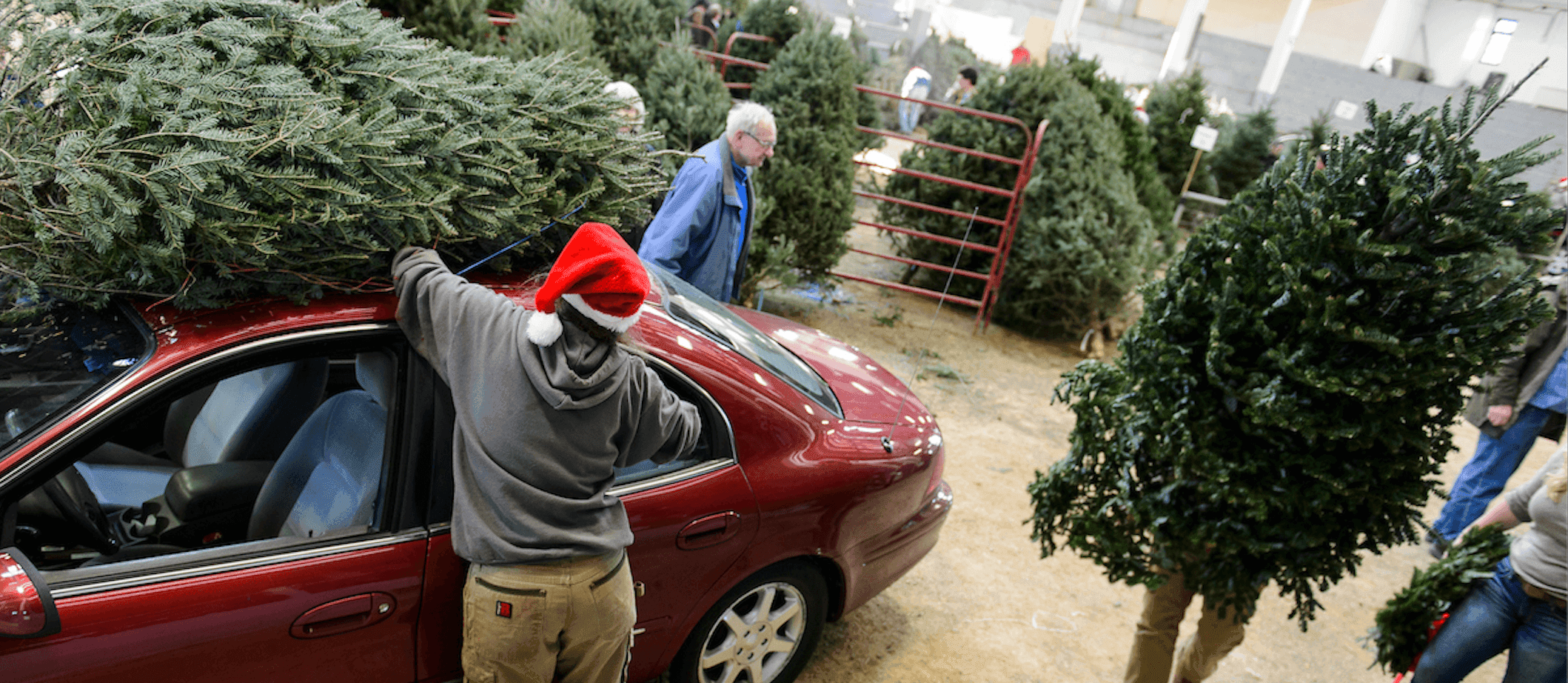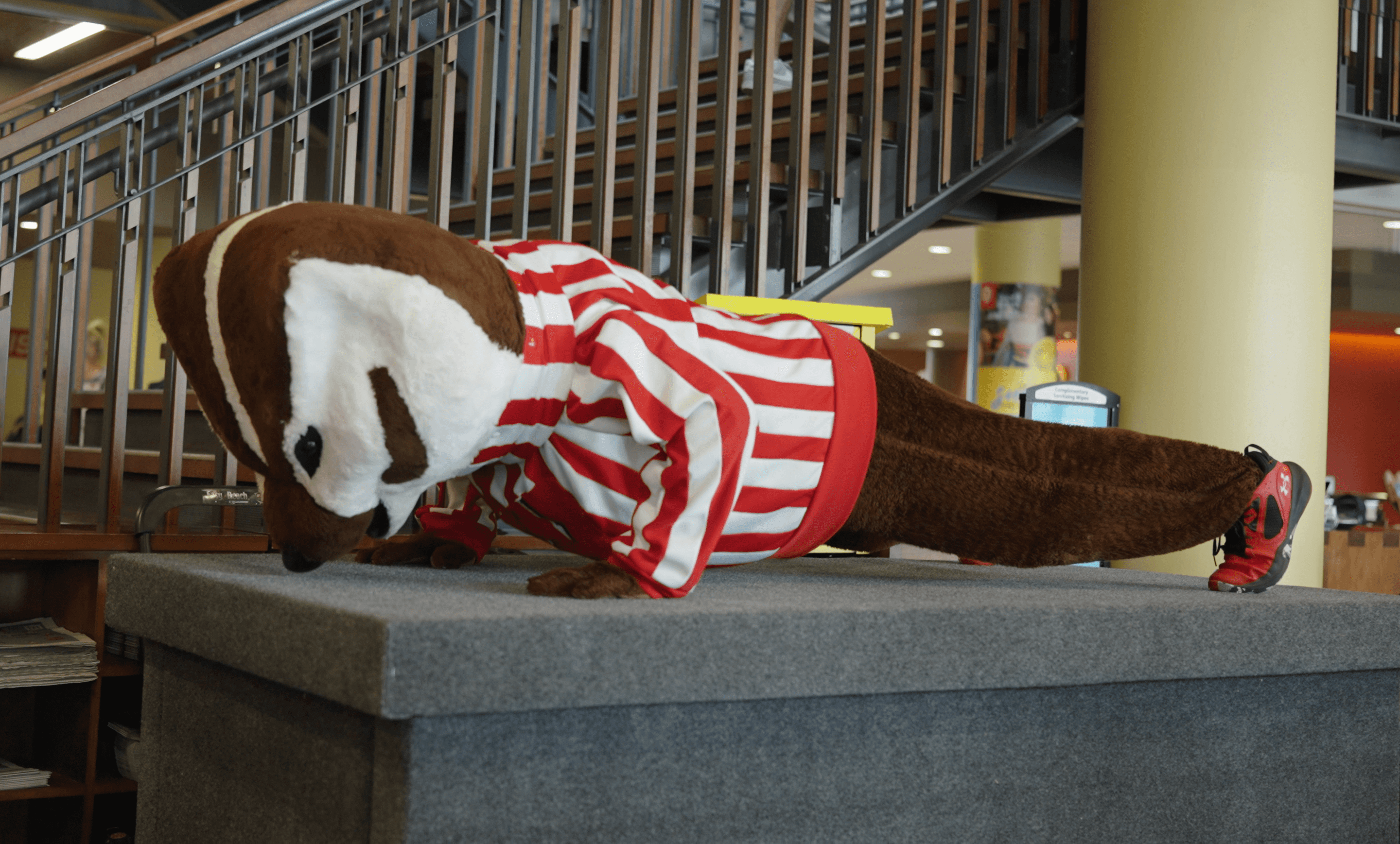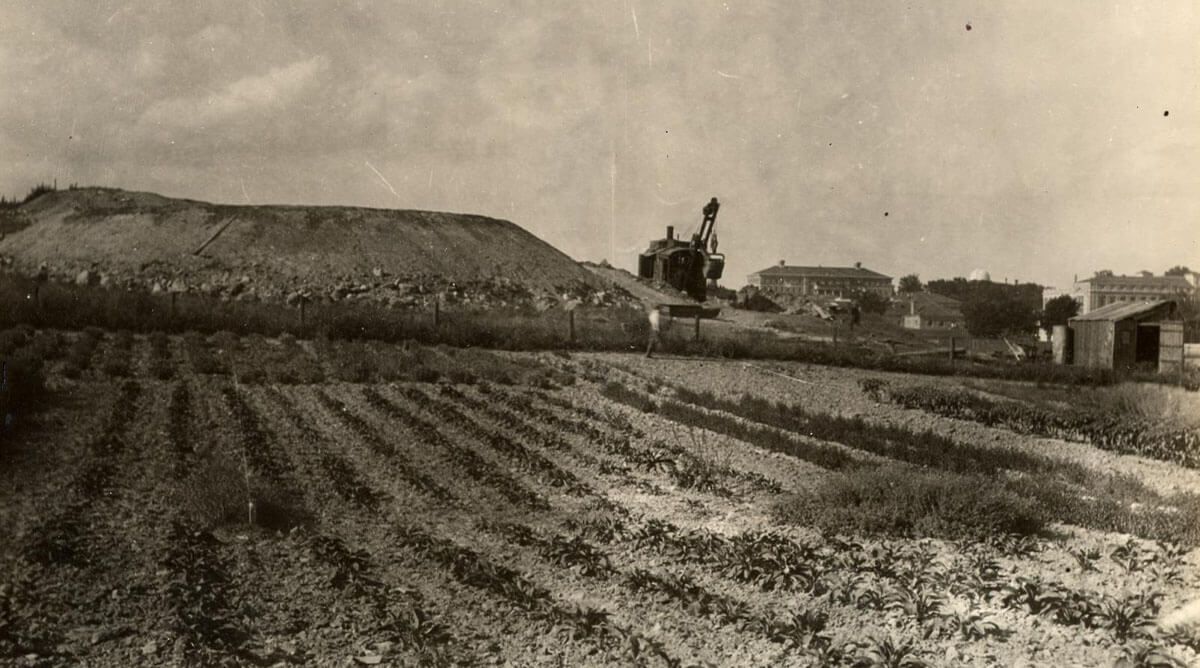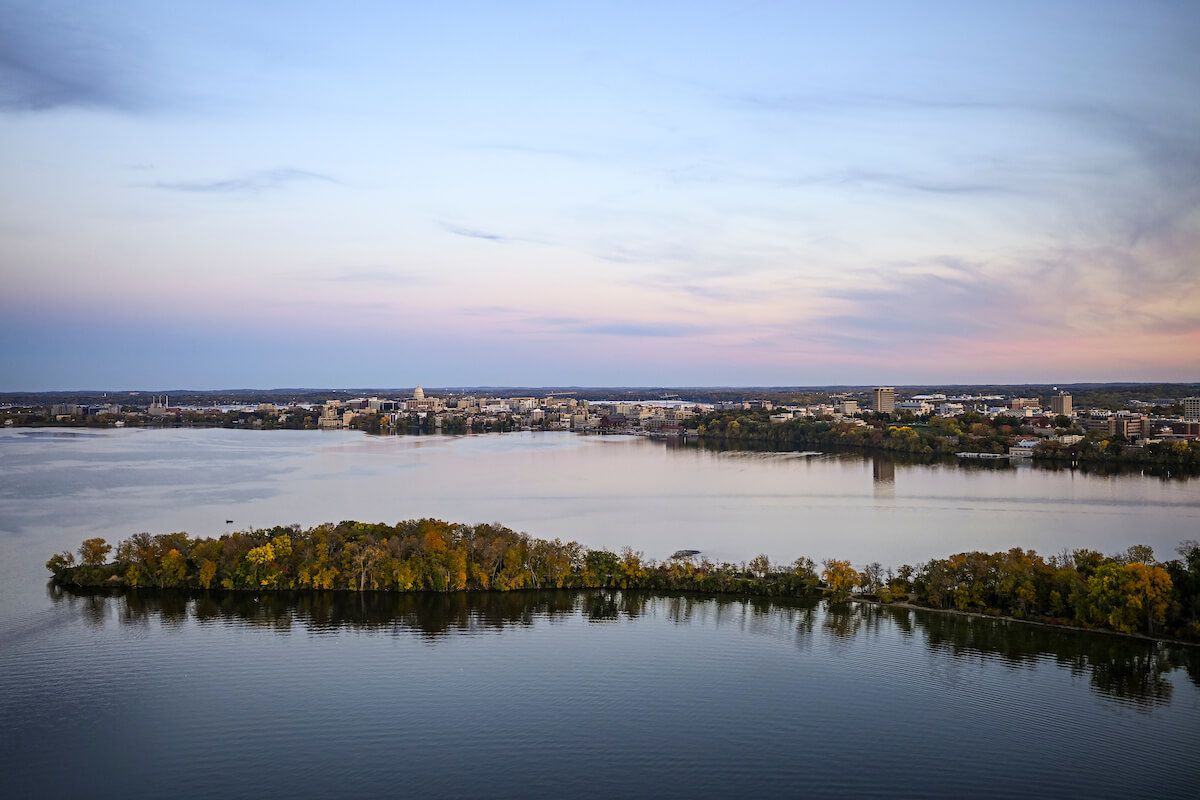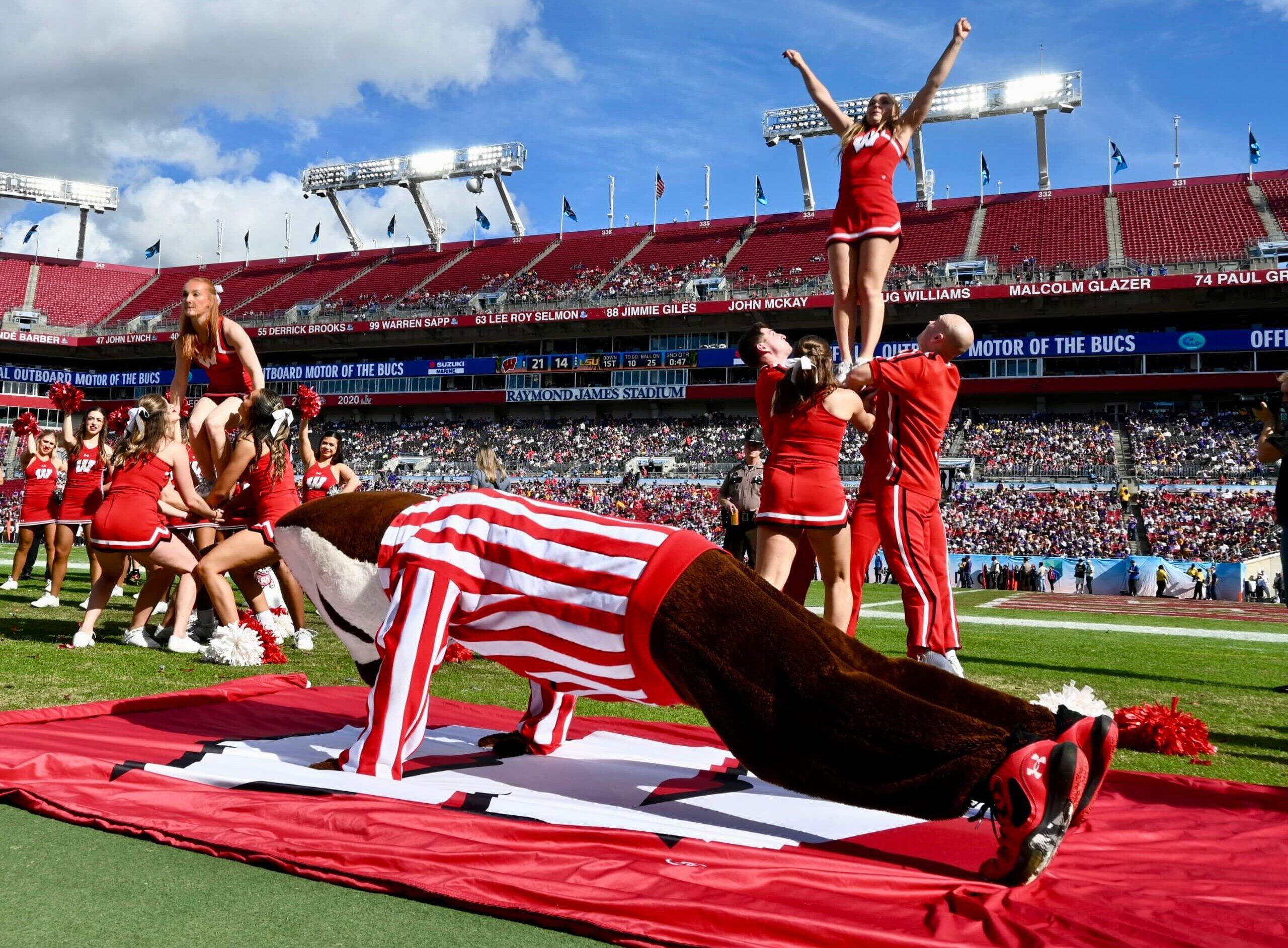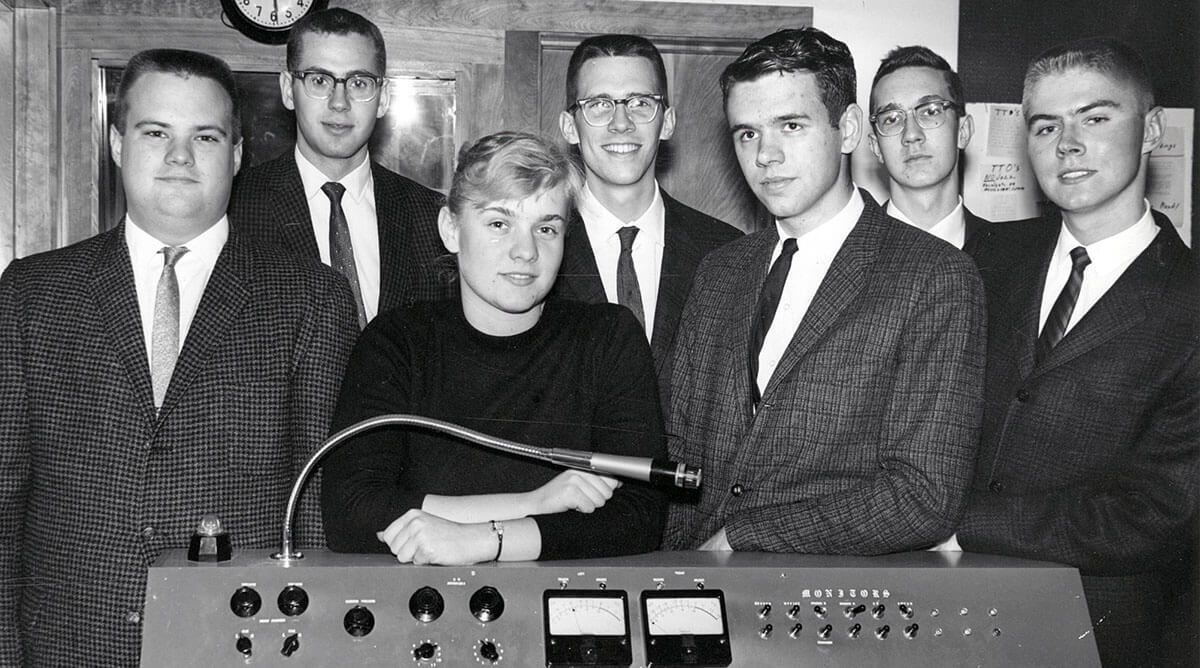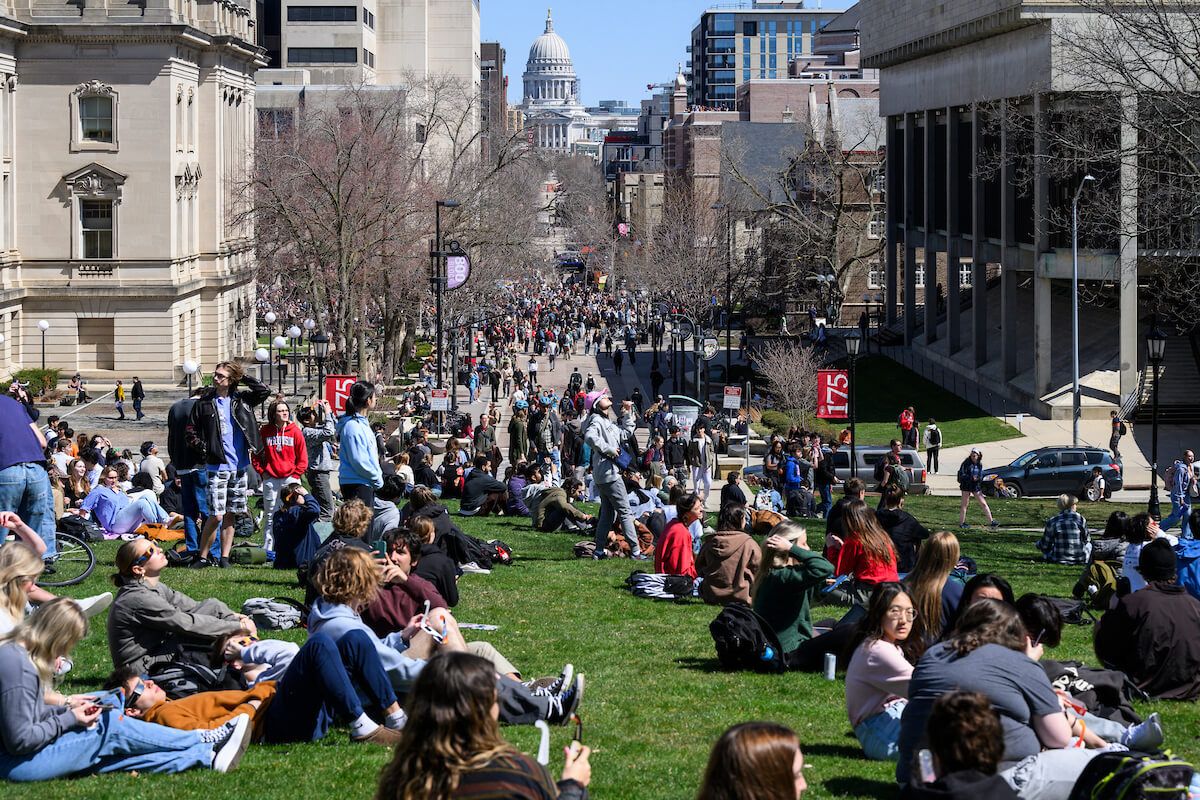“Trees are among man’s best friends,” Wakelin “Ranger Mac” McNeel stated in his opening remarks as a guest on WHA’s Homemakers Program in 1948. A UW agriculture professor, forester, and host of his own radio show, Afield with Ranger Mac, McNeel was featured in an episode of the Homemakers Program to educate listeners on Christmas tree selections.
A celebrated conservationist and environmental educator, he naturally began this segment lamenting the annual sacrifice of evergreens. “The fate of the poor Christmas tree comes to my mind every January 1st when I see the forlorn skeletons waiting dejectedly beside ashcans and boxes of trash, waiting for their last ride,” he shared, before expressing his optimism that living, potted trees might be used in the future.
Despite Ranger Mac’s surprisingly poetic and depressing digression, he did get into the holiday spirit, proclaiming that “it is at Christmastime that trees serve an exalted purpose of bringing the magic of Christmas into the home.”
It’s difficult to say whether today’s widespread use of artificial trees would bring him relief, or if the sight of a fake tree would offend this man of the woods. However, in 1948, the annual debate was not artificial versus living, or even potted versus chopped. Christmas tree selection was instead a matter of species. So, for those of you who refuse to board the artificial tree train, let’s take a stroll around the Christmas tree lot with Ranger Mac and learn to identify the common evergreens that shoppers came across in the 1940s.
Scotch Pine:
- Scotch pine needles are bluish-green, come two in a cluster, and are between one-and-a-half to three inches long.
- “The needles twist, are sharp-pointed, and will not fall off during the week or two that the tree is in the house.” (This is bad news for anyone who bought their tree the day after Thanksgiving.)
- This tree was one of the most popular options in the Madison area at the time of the broadcast.
White and Black Spruces:
- Ranger Mac calls these evergreens “the most shapely Christmas trees” with their symmetrical, conical shape and “heaven-pointing spiral.”
- “Our native white and black spruces are traditional Christmas trees.”
- The needles are sharp and thickly dispersed, but both spruces lose their needles easily.
Douglas Fir:
- An option often brought in from western states, the Douglas fir has softer, longer needles and drooping branches.
- This tree tends to hold its needles better even as it dries out in the house.
Balsam Fir:
- “But the favorite Christmas tree, because of its symmetry, its fragrance, the shining upper surface of the leaves, the blue color of the underside, and because it holds its needles upon drying,” Ranger Mac says, “is the balsam fir.”
- The needles are flat and appear in a V-shaped pattern on the upper side of the branches.
Whichever tree you purchase, Ranger Mac highly recommends keeping it in a pan of water to extend its indoor life. And pairing any tree with proper holiday cheer will carry you through the season, even if all the needles are already gone. “With Christmas candles, yule is bright, and carols fill the frosty night,” Ranger Mac recites. “But all the years so still, so still, the pines are growing on the hill. A Merry Christmas to you all.”
